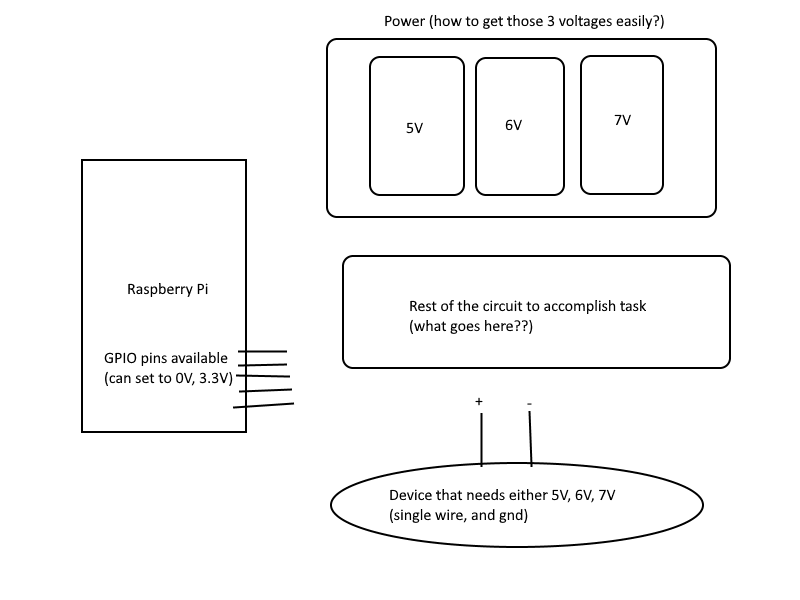Here's my problem. I have a device to control that needs to always have one of three voltages applied to it: 5V, or 6V, or 7V. And I need to be able to programmatically switch between them.
What I have available is a general mirocontroller with GPIO pins that I can set at some different voltage (e.g. 3.3V). I have a feeling relay circuits could do this but I can't figure out how to switch between my 3 different voltages.
Question summary:
What circuit would implement this with simple components? How should I create the 3 voltages I need? Assume I can buy whatever simple parts from Amazon etc.




